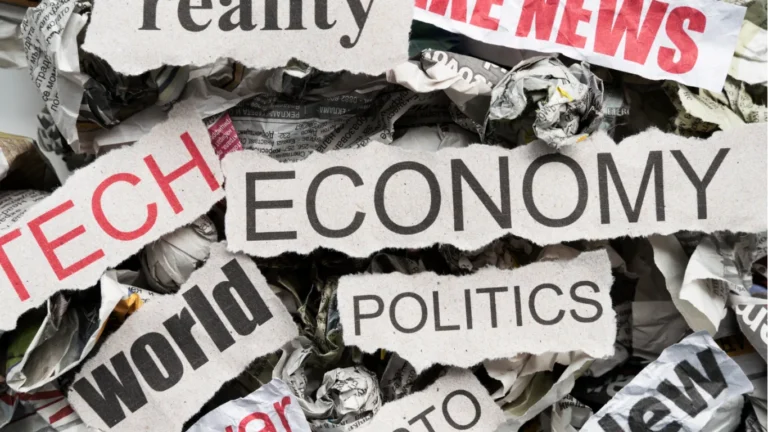In today’s fast-changing financial world, staying informed about global economic developments is essential. The latest world economy news brings updates on inflation rates, global trade, currency movements, and government policies that directly impact businesses and consumers. With every country facing unique challenges in 2025, the world economy continues to shift between recovery and uncertainty. Understanding these economic changes can help individuals and organizations make smarter financial decisions in an increasingly connected world.
Global Inflation Trends in 2025
Inflation remains one of the major global concerns as prices for goods and services continue to fluctuate. Many developed and developing nations have experienced rising living costs due to increased energy prices, supply chain issues, and geopolitical tensions. Central banks in the United States, Europe, and Asia are closely monitoring inflation rates and adjusting interest rates accordingly. The trend suggests that while inflation has cooled in some regions, it still poses significant challenges for policymakers aiming to achieve long-term stability.
The Impact of the U.S. Economy on Global Markets
The U.S. economy continues to play a crucial role in shaping the direction of global financial markets. As the world’s largest economy, America’s monetary policies, stock market performance, and employment rates influence economic trends in nearly every region. When the U.S. Federal Reserve raises or lowers interest rates, it affects everything from currency values to commodity prices worldwide. In 2025, the U.S. dollar remains strong, attracting investors, but also creating pressure on emerging markets struggling with debt and import costs.
Europe’s Financial Stability and Economic Challenges
Europe faces a delicate balance between economic growth and financial uncertainty. The European Union has been dealing with the aftermath of energy crises, fluctuating trade relations, and the need to strengthen digital and green economies. Countries such as Germany, France, and Italy are working on recovery programs aimed at boosting productivity and reducing unemployment. However, political differences and rising costs of living have made it difficult to maintain a unified financial approach. Despite these challenges, Europe’s technological and renewable energy sectors continue to attract investment.
Asia’s Growing Economic Influence
Asia remains a key driver of the world economy, with countries like China, India, Japan, and South Korea leading industrial and technological growth. China’s manufacturing and export performance continues to impact global supply chains, while India’s expanding service and technology sectors contribute to the region’s rapid development. Meanwhile, Japan and South Korea focus on innovation, particularly in electronics and green energy. Collectively, Asian economies are expected to account for a larger share of global GDP by the end of the decade, signaling a major economic power shift toward the East.
Developing Nations and Economic Recovery
Developing countries are striving to recover from recent global disruptions such as the pandemic, supply shortages, and rising debt levels. Many African, Latin American, and Southeast Asian nations have launched programs to attract foreign investment and promote local industries. However, debt burdens and limited access to international markets remain significant obstacles. Organizations like the IMF and World Bank continue to support these nations with financial assistance and policy guidance. The success of these efforts will determine how evenly global economic growth is distributed in the coming years.
The Role of Technology in Global Economics
Technology has become one of the strongest forces shaping the modern economy. Artificial intelligence, automation, and digital finance have revolutionized how companies operate and how consumers interact with the market. The rise of fintech and cryptocurrency has changed traditional banking systems, offering faster and more secure transactions. Additionally, the growing focus on green technology and renewable energy is influencing economic policies worldwide. The integration of technology into every sector continues to drive innovation and create new economic opportunities.
Future Predictions for the Global Economy
Experts predict that the coming years will bring both challenges and opportunities for the world economy. Continued innovation, sustainable energy initiatives, and advancements in digital infrastructure are expected to create new markets. However, issues like climate change, geopolitical conflicts, and inflation may slow down growth. Economists emphasize the importance of global cooperation and responsible policy-making to ensure stability. While no forecast is perfect, staying informed about global economic developments will remain crucial for individuals and investors alike.
Conclusion
In summary, the latest world economy news highlights a world in transition — one that is adapting to new technologies, political shifts, and financial realities. Inflation remains a key concern, but innovation and sustainable development offer hope for recovery and growth. The balance between developed and emerging economies will define the next decade of financial progress. As countries continue to navigate challenges like trade tensions and digital transformation, global cooperation will become more essential than ever. Staying informed and adaptable will help individuals, investors, and businesses thrive in an unpredictable but opportunity-filled economic future.
FAQs
What are the main global economic trends in 2025?
The main trends include controlled inflation in major economies, the rise of digital finance, and increased focus on renewable energy investments. Many countries are also prioritizing sustainable growth to balance environmental and financial stability.
How does the U.S. economy influence global markets?
The U.S. economy affects global markets through its monetary policy, trade relations, and stock performance. When the Federal Reserve changes interest rates, it can strengthen or weaken currencies around the world, impacting imports and exports.
Which countries are driving Asia’s economic growth?
China, India, Japan, and South Korea are leading Asia’s economic growth due to advancements in technology, manufacturing, and digital services. Their growing industries continue to shape global trade and supply chains.
What challenges do developing nations face in 2025?
Developing countries are struggling with high debt levels, limited access to capital markets, and inflation pressures. Many are working on policies to boost exports, attract investments, and stabilize their currencies.
How is technology changing the world economy?
Technology drives productivity by automating industries, enhancing digital payments, and supporting innovation in every sector. The growth of artificial intelligence, fintech, and renewable energy technologies continues to redefine global economic systems.


